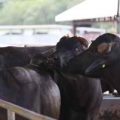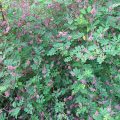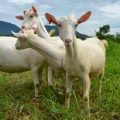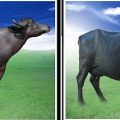No doubt, Filipinos are a huge consumer of milk. According to the National Dairy Authority (NDA), the country’s milk import in 2018 totaled 531.47 million kilograms (kg), worth ?52 billion. Local milk production, on the other hand, only contributed 23.69 M kg.
Of the total local milk production, only 3% came from dairy goats. Local milk production, which averages 1.17 liters/day per animal, was hampered by the scarcity of feeds and poor genetics, which are cited as some of the challenges of the industry.
To increase goat milk production, a study by the Central Luzon State University (CLSU) explored the use of a shrub, Indigofera zollingeriana as feed for dairy goats. Titled, “Enhancing Milk Production of Dairy Goats through Indigofera zollingeriana Supplementation,” the study is led by Dr. Edgar A. Orden of CLSU, Nueva Ecija.
The potential of the shrub was initially observed by the late Rene Almeda, a farmer from Alaminos, Laguna. His herd’s milk production increased exponentially when he introduced Indigofera to the goats.
After this observation and after Almeda challenged research institutions to investigate the science behind Indigofera’s potential, CLSU studied the shrub’s nutritional composition and degradation characteristics. They also studied Indigofera’s potential in increasing milk yield as well as its financial benefit for goat raisers.
The offshoot of the CLSU study is the product now registered with the Intellectual Property Office (IPO) as Sure Feed for Goats or “SFEED” – pelletized Indigofera that is cheap, nutritionally-balanced, and highly digestible for goats.
The study noted a 195.86 liters (L) milk yield in 110-day lactation when the lactating Saanen does were fed with Indigofera and napier. This milk yield was 23.61% higher than milk yield from goats fed with Leucaena-based diet (Leucaena-based pellets and napier), which only recorded 149.6 L. The difference in milk yield was valued at ?6,936.
In terms of cost, feeding lactating does with SFEED together with napier in 110 days only costs ?1,011.37 or an additional cost of only ?5.45 compared with Leucaena-based diet.
According to the study, feed intake is an important factor to boost milk production. Intake of Indigofera with napier reached 1,425 g per day or 0.8% higher than the recommended 3% consumption by body weight. With the increased feed intake, the study observed higher milk production especially from early to peak of lactation.
Investing in SFEED for 115 metric ton production, which include the pelletizing machine, labor, and operational expenses, will cost ?1,536,689. According to the investment analysis, the internal rate of return (IRR) is at 15%.
Meanwhile, the study also provided an investment plan for a 25-doe dairy goat production, wherein total investment for Anglo-Nubian goats was at ?2,090,742 and ?2,129,457 for Saanen goats. The projected average return of investment (ROI) was at 69.49% and 121.88% for Anglo-Nubian and Saanen goats, respectively.
The CLSU study is one of the three finalists in the Research Category of the National Symposium on Agriculture, Aquatic and Natural Resources Research and Development (NSAARRD).
Initiated by the Philippine Council for Agriculture, Aquatic and Natural Resources Research and Development of the Department of Science and Technology (DOST-PCAARRD), NSAARRD aims to recognize the significant contributions of individuals and institutions in uplifting the status of agriculture, aquatic, and natural resources research and development in the country.
NSAARRD is held yearly as a featured activity in line with the celebration of the PCAARRD anniversary. This year, the Council adopts the theme PCAARRD at 8: Addressing Regional Needs through Sustained Partnership.
by Rose Anne M. Aya, DOST-PCAARRD S&T Media Services






